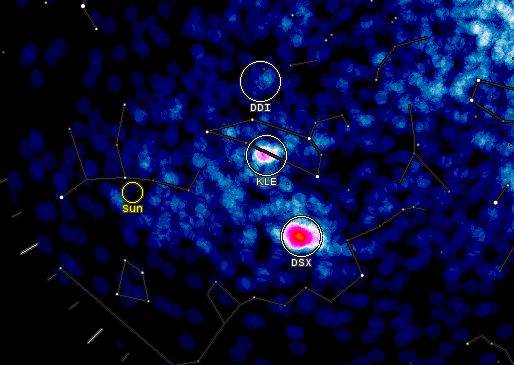
"This daytime shower is linked to asteroid 2005 UD," says Brown. "It is also related to the Geminid meteor shower, which itself comes from asteroid 3200 Phaethon. Thus, the Daytime Sextantids are part of a broader complex of interlinked showers, probably the remnants of some long-ago disruption of a larger parent body."
The Daytime Sextantids usually last for about two weeks, so the shower will be detectable for another week, but today/tomorrow is the peak. Tune into Space Weather Radio for live radar echoes.
"While the Daytime Sextantid shower won't put on much of a show in nighttime skies, another meteor shower is coming which will," adds Brown."CMOR is now detecting the first hints of the Taurids. According to some predictions, the Taurid shower will be unusually strong this year, potentially showing many fireballs in late October – early November. Stay tuned!
Bron: http://www.spaceweather.com/

 Daytime meteor shower
Daytime meteor shower




